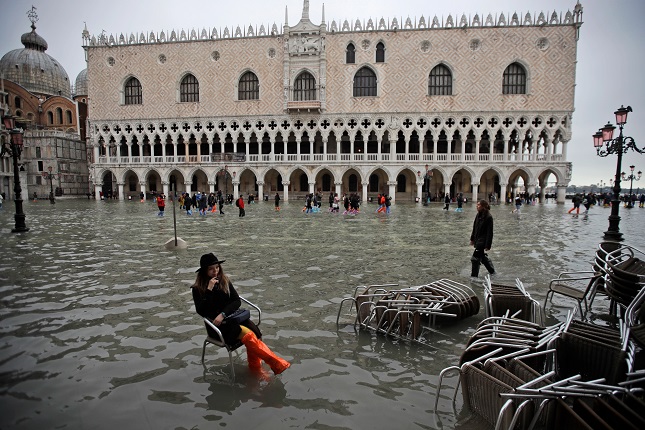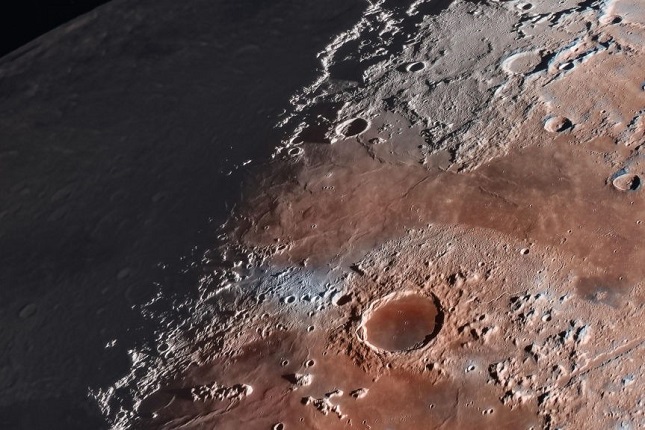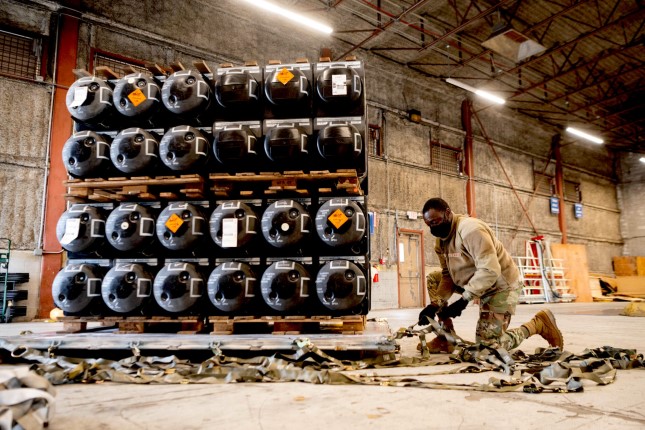Of late, it has become customary to hold international conferences on climate change and its impact in Venice, Italy. As one might have guessed, there is a particular reason why this city is so often picked as a venue for climate conventions. Sadly, one of Italy's gems and top tourist destinations and one of the world’s most beautiful cities, sprawled across 118 islands, is in danger of becoming the "Atlantis of our time". Water that has been Venice's blessing for centuries is now turning into its bane.
As recently as November 2019, Venice suffered its second most devastating flooding in history. The tide rose to 187 cm submerging 80% of the city. This is only slightly behind the record level of 194 cm recorded in 1966 when Italy had to raise money worldwide to help it deal with the consequences of the catastrophic flood. But the real problem lies beyond the discussion of record-breaking water rises. Natural disasters happen from time to time; apparently, there is very little we can do about it. It gets much worse when an occasional incident becomes a pattern.
According to the Independent, Venice suffered almost as many floods (the local term is "acqua alta", or high water, indicating that the water level has risen to above 1.1 meters) in the first two decades of the 21st century as it did in the whole of the previous century: 163 versus 166. The number of the so-called "superfloods" associated with a rise in water levels above 1.4 meters is also rising. Since observations began in 1872 and up until the early 2020s, this threshold was surpassed more than 25 times, out of which 16 incidents occurred between 2000 and 2020. And, to top it all, the five superfloods that swept Venice over just a few short weeks in November and December 2019, when several weather factors converged into a "perfect storm", became the proverbial icing on the cake. Whereas at the beginning of the 20th century, St. Mark's Square got flooded on average 6 times a year, by the end of the century, that number had already surpassed 100.
The immediate causes of "high water" can vary, including high tides, winds, or moon cycles. The underlying cause, however, is two-fold: it’s not just that climate change is causing sea levels to rise. This is compounded by the fact that Venice itself is simultaneously sinking lower for reasons of purely man-made nature.
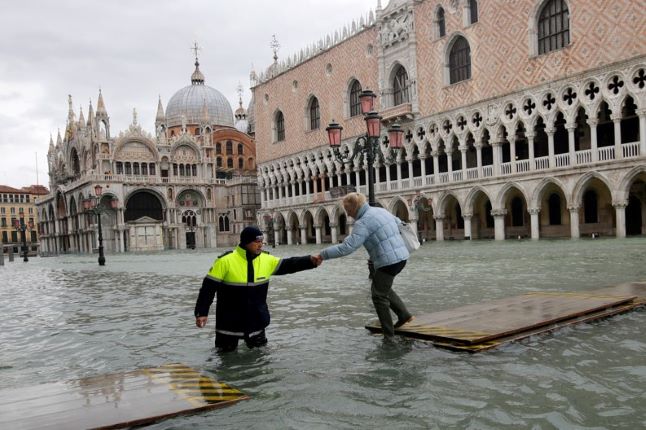
Experts believe that the origins of today’s precarious predicament can be traced back to a highly controversial and flawed engineering solution adopted by Venice some 600 years ago to divert the courses of the three rivers that emptied into the Venetian Lagoon. At the time, local engineers feared that the rivers were carrying too many sediments, thus threatening to undermine the city's key strategic advantage, its water defences, making it more vulnerable to an attack. As a result, they were confronted with the other extreme: the sea started to eat away at the soft shores of the Venetian Lagoon’s numerous marshy islands.
This process of erosion was dramatically accelerated in the 19th century owing to the fact that the passages leading to the lagoon were widened and cleared to accommodate large ocean-going ships. This was further exacerbated in the 20th century by draining local shoals that had been dampening the force of incoming tides to be used for agricultural purposes, coupled with constructing an airport and an industrial park. By studying local artists' paintings, researchers could ascertain that the lagoon’s water level was about 80 cm lower in the first half of the 18th century.
Along with that, researchers point out, the sea level continues to rise, and fairly quickly at that. According to the UN climate change panel, by the end of the century, the ocean’s level is expected to rise by 80 centimetres, just below Venice’s current location above sea level. Estimates by the European Geosciences Union (EGU) yield an even grimmer outlook: the level of the ocean is expected to rise by an impressive 120 centimetres, which, to Venice, would mean being in a perpetual state of "high water" with sizeable parts of the city being flooded all year round.
And while it is true that the city is not going to sink, as Atlantis was purported to, to the bottom of the ocean, the destruction process resulting in the erosion of buildings built out of limestone will accelerate dramatically and trigger Venice’s transformation into a "dead city", leading to a mass-scale migration of its inhabitants to the “mainland” and this tourist mecca’s de-facto closure. The city’s population has dwindled three-fold, from 180,000 just a few decades ago to the current 60,000.
The devastating flood of 1966 sparked a broad-based and practical discussion focusing on how to save Venice from the encroaching sea. In 1973, the Special Law of Venice made this a matter of the nation’s "top-priority national interest". For a long time, however, this discussion proceeded in a characteristically "Italian" manner: there were a lot of talks and proposals, but nothing tangible was happening.
It was not until the early 1990s that Italy’s Ministry of Infrastructure homed in on a flood barrier system consisting of mobile locks designed to cut off the lagoon from the Adriatic Sea when the tide exceeded the "normal" level of 110 cm. This project was christened MOSE, an acronym for Modulo Sperimentale Elettromeccanico, and partly as a reference to the Old Testament prophet who used the power of his prayers to successfully part the Red Sea waters.
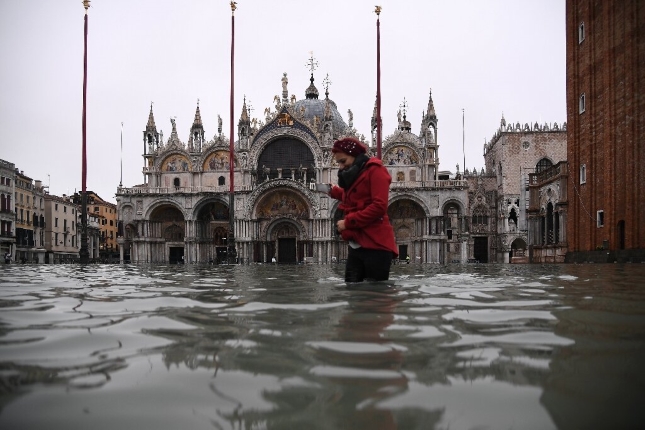
All sorts of different surveys and studies took another decade to complete. As a result, the first tranche of funds to finance the project’s implementation did not come through until 2002. According to initial estimates, the project cost was expected to be €2 to €3 billion, but very soon, the estimate swelled to €6 billion, in the characteristically Italian tradition. In short, almost 30 years had passed since the day when the matter of saving Venice was designated as a matter of "top-priority national interest".
The commissioning of the water barriers supposed to shut the three passages into the lagoon has also been postponed a few times. This was initially scheduled to occur in 2000, but then it was put off until 2012 and even further back to 2016. In fact, the very first full-scale use of this system of 78 mobile water barriers did not occur until October 2020, when the city was saved from the 135-cm "high water" flood. The project's completion is now scheduled for 2023, with another €500 million earmarked for the system’s "fine-tuning".
But does this mean that Venice will soon be rid of its "high water" problem? Or, perhaps, this question should be phrased differently: for how long? So far, the MOSE project that Italy has, incidentally, already spent as much as half a century to see through appears to have been showing its effectiveness. But there are, nonetheless, a couple of nuances that cast doubt on its promise to last for long (considering that the system was engineered to run for a hundred years).
Let's start with its cost. It has taken so long to build due in no small part to its impressive price tag. Big money is hard to come by, and vast sums of money tend to give rise to all sorts of corrupt schemes, thus slowing things down considerably.
MOSE is a hog to run: it costs €300,000 just to shut the Venetian Lagoon for two hours. As a result, any deterioration of the economic situation in Italy (or in the EU in general) could mean that the project will be forced to continue running in its current pilot mode or will be mothballed indefinitely. In short, its scale is so enormous that even a country such as Italy could find it difficult to afford it in the long run.
Another point that scientists have already started to bring forward is more far-reaching and grave. MOSE was developed in the early 1990s based on the assumption that the sea level would only rise by 22 cm in a hundred years. In the opinion of experts, the locks will be unable to continue protecting the city should the sea level rise above 60 cm. It will suffice to recall the forecasted numbers mentioned earlier – 80 and even 120 cm – to figure out what fate awaits Venice.
Characteristically, experts were cautioning about the dam’s potential worthlessness back when it was still being designed. As an alternative, some suggested “raising” the city itself by injecting water into wells drilled under the city’s bottom. Some contend that this way, Venice could be raised by some 30 cm in a decade.
The bottom line is that, so far, the problem of Venice sinking has only been postponed for a few decades at most. In the end, it can only be solved by using some as-yet unavailable breakthrough technologies or via a massive-scale project that a consortium of countries can only implement, thereby not only combining their technical capabilities but also improving their control over the effectiveness of spending.
